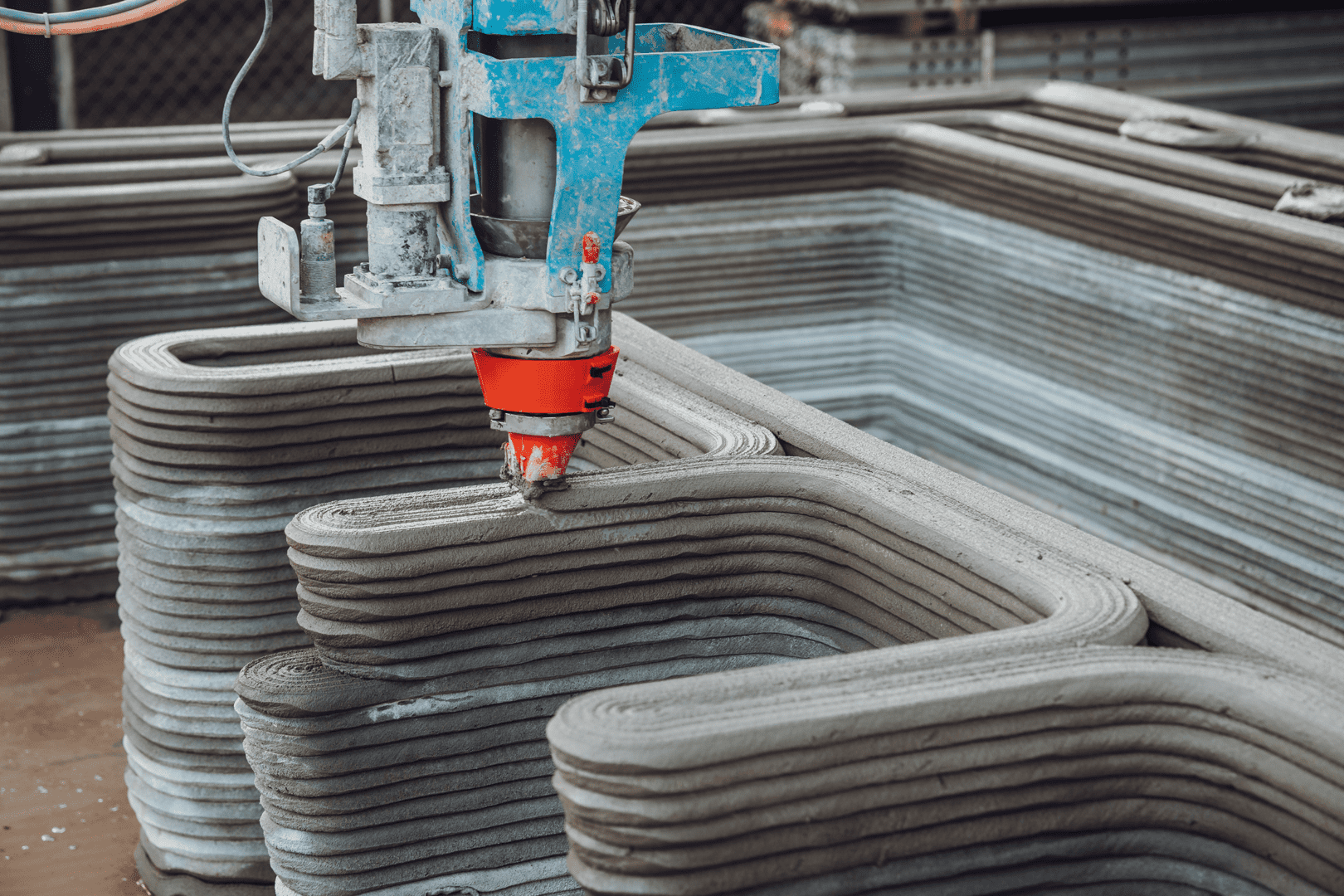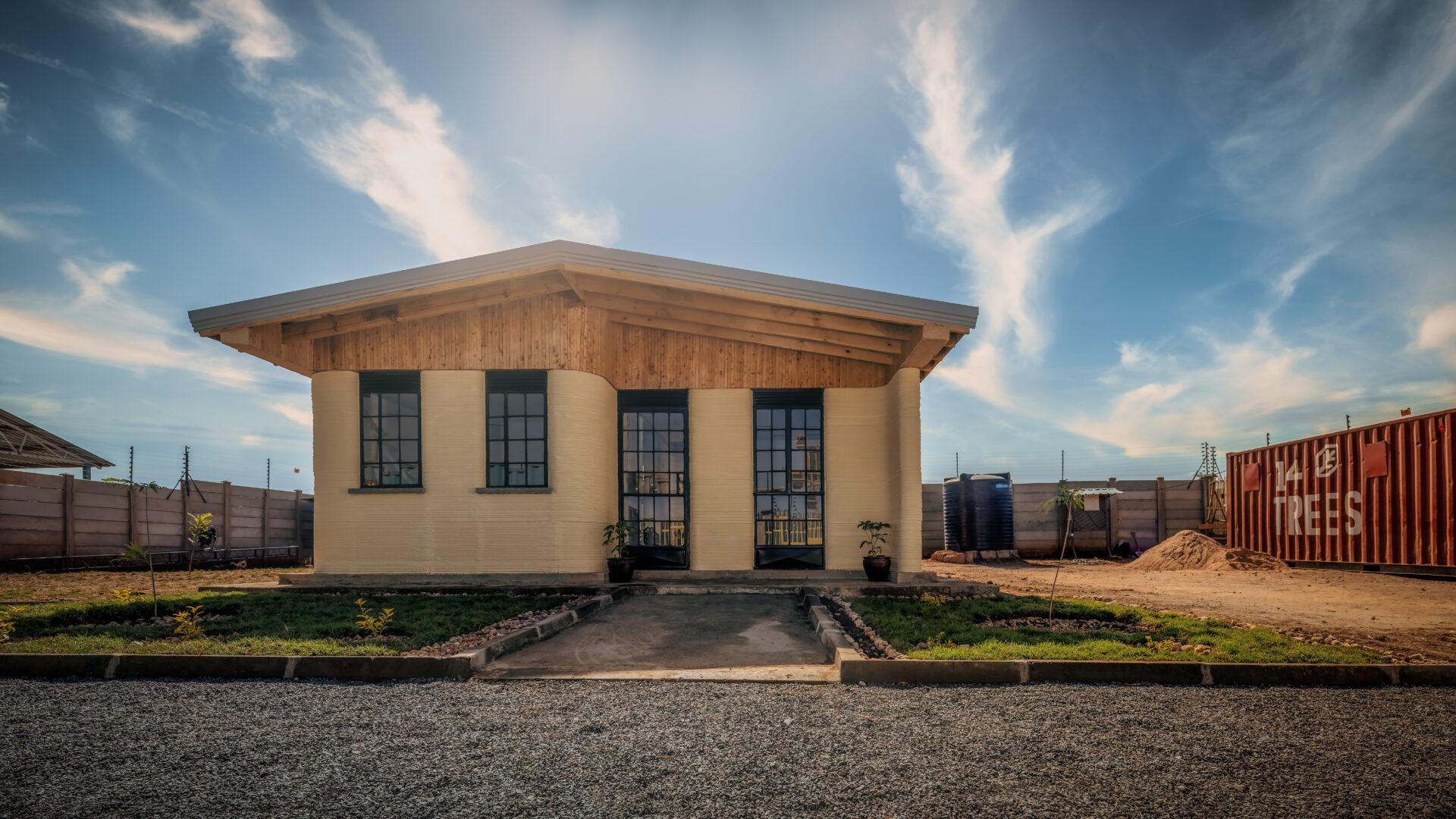3D construction printing is still a young and developing industry. Even in the early stage, this technology’s achievements have been astonishing. For example, the possibility to efficiently build complex shapes, reduced costs and fewer construction errors are a few highlights. However, there are still a few challenges we have to overcome.
In this article, we will briefly introduce you to the advantages and disadvantages of 3D construction printing.
Pros of a 3D printed house
3D construction printing (also known as 3DCP) opens up a new world of possibilities that are not feasible with conventional construction methods. Among them are design flexibility and the opportunity to implement complex shapes, reduced materials and labor costs, and fewer construction site errors due to automated processes.
- Design flexibility
Complex or rounded shapes are challenging and expensive to construct conventionally. The design possibilities are more flexible when using a 3D construction printer for construction projects. For complicated shapes, the 3D construction printer can accurately deposit small quantities of concrete where needed, considerably improving an architect’s design options.

- Reduced costs
There are several ways in which expenses are significantly reduced when 3D printing a house. By deploying 3DCP, architects and builders can accurately calculate the required material. When construction workers are able to predict material usage better, it is easier to reduce construction waste, which in the long run can help reduce costs on the material.
Secondly, a building project’s completion time can be drastically shortened by using a 3D printer. For example, 3D technology enables building a house in around a month and a half instead of the usual 6 month building time with conventional methods. This results in, for example, reduced personnel costs since the process is faster and workers are not needed to be onsite for as long as in conventional construction.
In addition, only 2-3 people are required to maintain the printer. A specialized and well-trained printer operator and a materials operator are responsible for ensuring the 3D printer runs smoothly and safely. At COBOD, we also recommend having two helpers on the construction site. Therefore, having only 4 people onsite reduces construction expenses compared to maintaining the whole team for a conventionally constructed house.
Important note: After building the foundation and walls, you may need more workers to complete the building, such as adding plumbing and installing windows. However, the work done by the 3D printer is still considerable since it reduces the workers needed.
Examples of the advantages of using 3D construction printing to reduce costs
To give a real-life example of the reduced costs, we would like to highlight projects built with the technologies developed by COBOD. Today, COBOD is the world leader in 3D construction printing solutions. With most printers sold worldwide, our customers have accomplished numerous projects.
For instance, GUtech 3D printed 3 buildings in just 8 days in Duqm, Oman, by utilizing COBOD’s BOD2 construction printer. With only 3,600 USD spent on concrete, GUtech and COBOD constructed structures totaling 173 m2. This result is astonishing since nobody has ever 3D printed three buildings on site in less than eight days. Together with COBOD, GUtech demonstrated the technology’s capability by combining a rapid project turnaround with the use of little labor and concrete.
- Fewer construction errors
Last but not least – a 3D construction printer helps to limit the number of construction errors. Human error is more likely to occur when people are constructing traditional houses. But when a house is 3D printed, the whole structure of the building is created by the 3D printer. As long as the layouts put into the 3D printer are accurate, there is a lower possibility of building mistakes.
Continuously curious about 3DCP? Explore the advantages of our 3D construction printer BOD2.
Cons of a 3D printed house
As mentioned above, there are still a few challenges to overcome within 3DCP. The disadvantages of 3D construction printing are mainly related to the novelty of the technology. A few challenges are, for example, a lack of engineers with the right competencies, local building codes and the transformation of current construction professions.
- Engineering Competencies
The entire design procedure must be handled differently since 3D printers cannot use conventional blueprints. Therefore, few specialists have shown any curiosity in 3D printed constructions. As a result, the new technology’s enhanced capabilities are not fully utilized throughout the design process.
However, a rising number of young professionals are curious about 3D printed structures. Still, their projects may not be realized due to a shortage of programs compatible with the new technology.
Nevertheless, COBOD is actively cooperating with different universities to enable future professionals to get familiar with modern technologies. For example, students of The Ohio State University in the US are exploring 3DCP technology and developing their skills with COBOD’s BOD2 construction printer.
- Building codes
One of the main challenges for 3D printing houses is the local building codes. To obtain 3D printed constructions licensed for home or commercial use, there is still no appropriate legislation or procedures created. The establishment of requirements for electrical, plumbing, structural soundness, and public safety legislation are still to be adapted by national authorities around the world.
- Transforming jobs
While 3DCP technology will ultimately lead to the creation of new work opportunities, it also has the potential to eliminate a large number of current professions. Currently, there are still relatively few jobs available in the innovative 3D construction printing field. However, it will have a considerably bigger influence on blue-collar occupations than any industrial revolution ever did.
Conclusion – main pros and cons of 3D construction printing
The 3DCP is a disruptive technology that has significantly improved the conventional construction industry. The main pros of a 3D printed home are the opportunities for new designs, reduced costs and fewer construction errors. All in all, this leads to a more efficient construction industry.
However, a few challenges are still present for the broader implementation of 3DCP technology. The cons of 3D construction printing are mainly related to the lack of professional competencies, a universal system for building codes and how to transform the current expertise of workers to fit 3DCP.
COBOD aims to disrupt the construction industry with innovative solutions, as well as overcome current challenges. With our many years of experience and profound knowledge, we look forward to further developing the possibilities of this innovative technology. Find the latest progress in our news section.
Read more about 3DCP in our blog.
